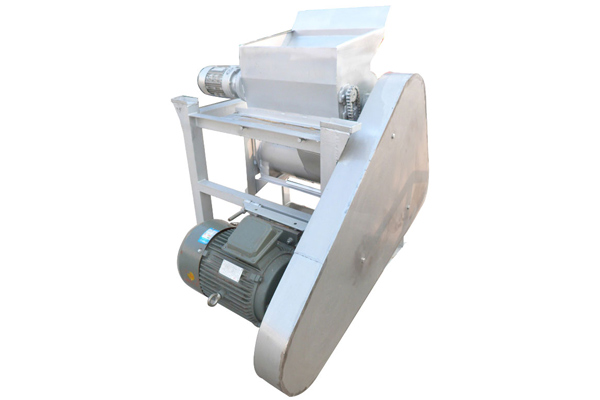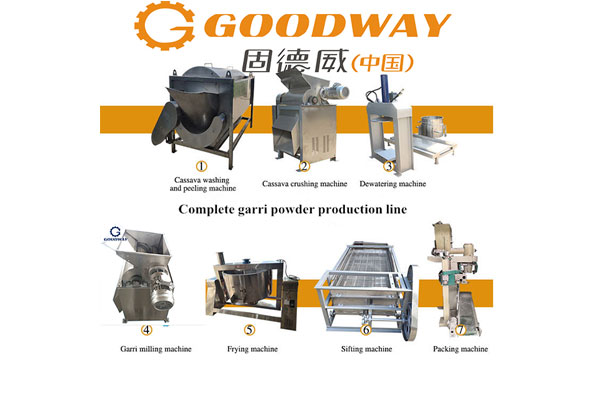Introduction: Cassava is one of the world's three major tuber crops, which is drought-resistant, barren-resistant, widely cultivated in tropical and subtropical regions of more than 100 countries or regions. As one of the three major tuber crops, it is the third-largest food crop in the tropics, and the sixth-largest food crop in the world. Known as the "king of starch", it is the ration of nearly 600 million people in the world. Cassava is a staple food in many developing countries because of its excellent characteristics of being easy to grow, easy to cultivate, high yield, and harvestable in all seasons.
According to the use, cassava can be divided into an edible type and an industrial type. The tuber of edible cassava is rich in starch, therefore it is an important raw material for many pharmaceutical and food industries, as well as for the development of biomass sources. There are more than 2,000 kinds of industrial products of cassava, playing an important role in crop layout, feed production, industrial applications and so on. It has grown widely as the main processed starch and feeds crops. With the development of the cassava industry, the use of cassava starch is gradually diversified and cassava starch can be used as industrial raw materials for food, medicine, cosmetics, textile, paper, confectionery, beverage, feed, biodegradable materials, adhesives and glues, chemicals, fuel ethanol and so on.
So what are the specific uses of cassava starch in related industry applications?
I. Cassava food
Cassava is divided into bitter cassava and sweet cassava. Sweet cassava is extremely low in toxins, while bitter cassava contains flaxseed bitter glucoside. It must be detoxified and cooked thoroughly before being eaten. Eating raw cassava or eating uncooked cassava may put you at risk of poisoning. So you need to wash, peel, and cook it before eating. As long as the cassava flour is sold formally in the market, it has been treated. So it is safe to eat.
Cassava tubers are bulky and rich in starch, vitamins, beta-carotene with minerals and cellulose, but low in protein, fat and so on. The cassava starch extraction process is essentially the same as the sweet potato starch extraction process. It is more widely used in the edible cassava process. After shredding, filtering, dehydration, drying, and other processes, we can obtain pure white cassava starch. The cassava starch used in cassava food is divided into three main categories: common cassava starch, denatured cassava starch, and all powdered cassava food.
Common raw cassava starch is widely used not only in food recipes such as baked goods but also in the production of extruded small foods and cassava beads. Modified starch or starch derivatives have been used as thickeners, binders, puffers, and stabilizers, and are also the best additive, sweetener, flavor carrier and fat substitute. Foods that use Thai cassava starch include canned foods, frozen foods, dry mixed foods, baked goods, snack foods, condiments, soups, sausages, dairy products, meat products, fish products, and baby foods.
1. Normal cassava starch food
①Cassava wine
Cassava starch is mixed with water in a ratio of 1:4 to form a homogenate. The water temperature was required to be 70 ℃; heat the homogenizer to paste the starch and then rapidly chill it to 60°C after 60 minutes, then enzymatically sweeten it for 30 minute; add 0.1% active dry yeast and 0.5% ammonium sulfat; set the fermentation temperature at 30°C (12 hours) for pre-fermentation and 35°C for mid-to-late stage. The total fermentation time is 72 hours, and finally, distill it.
② Cassava starch Bar
Cassava starch can be made into cassava starch bar after pulp, cloth pulp, high temperature steaming, cooling, and cutting. It tastes springy and resilient.
③ Cassava starch sugar
Cassava starch sugar is the general name of glucose, fructose, maltose, and mixture produced by cassava starch as raw material through catalytic hydrolysis of acid or enzyme. The application of deep processing of starch is common in the food, beverage, and health care industry, and the rapid development of the food, beverage, and health care industry also provides a sufficient market for the processing of starch sugar and sugar alcohol production.
2. Cassava modified starch
To improve the performance of starch and expand the range of applications of cassava starch, the food processing industry introduces new functional groups or changes the size of starch molecules by using physical, chemical, and biological enzymatic processing methods that make them more suitable for the requirements of practical applications. This starch that undergoes a secondary process that results in a change in properties is collectively known as modified starch.
China's cassava modified starch production has accounted for 40% of the total modified starch production. Modified starch is widely used in the food industry in the production of starch fudge, beverages, cold food, flour, and so on. Modified starch is widely used in the food processing industry as a versatile food additive. It gives the food a satisfactory sensory quality and edible quality by improving the ability of thickening, suspension, water retention, and stability of the starch, while also extending the shelf life of the food.
3. Cassava all powder food
The production method of cassava all powder is simple, with low water consumption, high utilization rate, low environmental pollution, and wide use, which can well solve the problem of poor storage and inconvenient transportation of fresh potatoes. Meanwhile, it increases the added value of the industry.
Cassava all powder is widely used in baked food, pastry, and other food fields in two ways: complete main material and incomplete main material (it is used together with other starch food materials), such as cassava all powder fans, cassava cake, cassava biscuit, cassava bread, cassava noodles, cassava steamed buns, yogurt, shrimp slice, macaroni, sweet wine, dumpling skin and so on.
II. Beverages
Modified starch is used as a colloidal stabilizer in beverages containing solid ingredients. In beverages, cassava starch sweeteners are superior to sucrose because the former improves processing and enhances product characteristics, which, in combination with other sweeteners, adequately meet consumer demand. The highly hydrolyzed syrup formed by the hydrolysis of cassava starch is an ideal source of readily fermentable sugars in beer brewing.
III. Candy
Raw cassava starch and various modified starch have many applications in confectionery products, such as gelling, thickening, stabilizing system, enhancing foaming, controlling crystallization, bonding, film formation, adding gloss, and so on. Low viscosity cassava starch is widely used in gelled confectionery such as jelly and chewing gum. The most commonly used is acidolytic starch because of its excellent reversibility and gelling ability, which is even more pronounced with sugar. Dry starch is used as a release agent in candy making. The production of sugar-free chewing gum was achieved with starch-based polysaccharides.
IV. Chemicals
Cassava starch-based can be produced at low cost by acidification or enzymatic processes, thus it can be used as a raw material for the production of various chemicals such as sodium glutamate, amino acids, organic acids, ethanol, ketones, vitamins, and antibiotics.
V. Adhesives and glues
Cassava starch dextrins are excellent adhesives for a wide range of applications, including corrugated board, paper bags, plywood, tapes, labels, stamps, and envelopes.
VI. Paper-making
Modified starch is used in the paper industry to improve paper quality, productivity, and pulp utilization. Cationic starch is used to flocculate pulp and improve wet dewatering efficiency, which results in higher machine speeds and higher pulp utilization. The starch retained on the finished paper can be used as an internal sizing agent to increase the strength of the paper. Low viscosity starch, such as oxidized starch, can be used as a surface sizing agent to increase paper strength and improve ink absorption during printing and writing. Modified starch is also used as an adhesive in pigment coating to produce smooth, white, premium paper. Many cassava starch manufacturers' main sales direction is cassava starch export. In Africa, the price of cassava starch is $300-400/ton, in our country the price is $3500-4000/ton, and in Southeast Asia the price of cassava starch is $4200/ton. So the profit margin is great. For example, Jianhui Paper in Dongguan, China, imported cassava starch from abroad for paper making.
VII. Textile
In the textile industry, cassava starch is often used as a sizing agent to harden and protect yarns to improve textile efficiency; it is used as a finishing agent to produce fabrics that feel smooth; it is used as a color enhancer to obtain a clear, wear-resistant printed fabric; for textile applications, lightly boiled starch is more effective.
VIII. Pharmaceuticals and cosmetics
Cassava raw starch and modified starch are used as binders, increasers, and disintegrants in the production of tablets. Specially modified starch can be used as a carrier for emollients, which are usually mineral oil-based substances. Other modified starches can be used as emulsifiers, sealers (vitamins), styling agents (hair mousse), and thickeners (shampoos).
IX. Biodegradable materials
Eaw cassava starch and modified starch can be mixed with petroleum-based or synthetic polymer materials to improve the biodegradability of the materials, to minimize the production cost of such environmental protection materials.
Goodway specializes in the production of
automatic cassava starch processing equipment, contact us now.

 EN
EN
 fr
fr  es
es  it
it  pt
pt 








